
An infection with the dangerous .Ipcrestore Virus leads to serious security issues. Victims can restore and protect their computers by following our complete removal guide.
Remove .Ipcrestore Virus and Restore PC
Manual Removal Guide
Skip all steps and download anti-malware tool that will safely scan and clean your PC.
SpyHunter anti-malware tool will diagnose all current threats on the computer. By purchasing the full version, you will be able to remove all malware threats instantly. Additional information about SpyHunter / Help to uninstall SpyHunter
Distribution of .Ipcrestore Virus
The .Ipcrestore Virus is a new virus which has been sighted in a limited attack campaign. At the moment the security researchers cannot determine the primary infection strategy. We presume that the most widely used tactics are going to be employed.
Among them are the email messages created in an automated way and sent to large lists of potential victims. The .Ipcrestore Virus can be directly attached to the messages. This is one of the easiest way for the criminals to attempt the infection. However a lot of email hosting providers usually capture the signatures of the virus and as such discard such messages or label them as dangerous or spam. Other infection methods related to this one is the option of inserting hyperlinks in the body content of the messages. The links are usually labeled as leading to a familiar website or a file of user interest. Redirects can redirect to hacker-controlled sites, infected payloads or other instances that can lead to an .Ipcrestore Virus infection.
The computer criminals behind the malware can create malicious sites or download portals which distribute malware of different kinds, including the .Ipcrestore Virus. A popular option is the use of infected documents which may be of different types ‒ spreadsheets, rich text documents, presentations and databases. They are modified to initiate the virus once the built-in scripts are run. Usually when the files are opened a notification will ask the users to run the macros (scripts). If this is done the infection follows.
The hacker-controlled sites are specialist portals that have been created either manually or automatically by the criminals behind the .Ipcrestore Virus. They can either directly distribute the threat by initiating various scripts or automated operations or link to such instances. Redirects are usually caused by email interaction, ad networks or other browsing activity. However one of the main sources is the availability of browser hijackers. They are malicious addons made for the most popular web browsers ‒ Mozilla Firefox, Google Chrome, Internet Explorer, Opera, Microsoft Edge and Safari. Once installed they not only infect the users with the malware, but also redirect the victims to a hacker-controlled site. Depending on the configuration the browser hijackers can also steal sensitive information such as any stored passwords, account credentials, history, bookmarks, form data and settings.
Impact of .Ipcrestore Virus
Security experts have discovered a new Globe Imposter strain known under the name of .Ipcrestore virus. It is probably a customized version of the original source code and retains much of the same behavior patterns as other famed examples of the malware family.
The onset of the initial infections began back in 2016 where the original malware started to attack users worldwide. One of the most important aspects of these infections lie in the fact that the ransomware operators utilize different distribution strategies in order to increase the global infection ratio. Many Globe Imposter malware including the .Ipcrestore virus actually impersonate an older family of threats called CryptoLocker.
And while the main goal of ransomware threats in general is to encrypt as many user files as possible and demand a ransom fee from the victims, it can also be the source of other malicious changes to the computer. Advanced strains are known to feature information stealing commands. They allow the infection engine to construct an unique infection ID (UID) which can then be reported to the hacker operators via a network connection. Initial parameters include the available hardware components, installed software applications and user settings.
Complex versions of the .Ipcrestore virus can institute a Trojan component into the victim system. This effectively allows the hacker operators to spy in real time the display of the victims, as well as record their keystrokes and mouse movement. These modules also give them the ability to install other payloads if desired.
Other Globe imposter strains that are similar to the .Ipcrestore virus can install themselves in a persistent way. This is a dangerous type of infection where the main virus engine actively monitors the actions of the users in order to prevent its removal. Only the use of a high-quality anti-spyware solution can remedy such infections. Refer to our instructions below for a complete guide on recovering your computer.
Once all prerequisite steps have completed succesfully then .Ipcrestore virus starts its ransomware. Like other similar threats it uses a built-in list of target file type extensions. Most virus engines seek to encrypt the most widely used user data including: documents, archives, backups, configuration files, images, videos and music. All processed data is renamed with the .Ipcrestore extension.
A ransomware note is created in a file called how_to_back_files.html which reads the following template message (excerpt):
YOUR FILES ARE ENCRYPTED!
ALL YOUR IMPORTANT DATA HAS BEEN ENCRYPTED.To recover data you need decryptor.
To get the decryptor you should:Send 1 test image or text file to [email protected]
In the letter include your personal ID (look at the beginning of this document)………………………….
Depending on the version a ransomware note can be created which features generic messages blackmailing the victims to pay a Bitcoin ransomware fee. We recommend that all users abstain from communicating with the hackers and use our full .Ipcrestore Virus removal guide below to recover their data and delete the active infections.
Remove .Ipcrestore Virus and Restore PC
WARNING! Manual removal of the .Ipcrestore Virus requires being familiar with system files and registries. Removing important data accidentally can lead to permanent system damage. If you don’t feel comfortable with manual instructions, download a powerful anti-malware tool that will scan your system for malware and clean it safely for you.
SpyHunter anti-malware tool will diagnose all current threats on the computer. By purchasing the full version, you will be able to remove all malware threats instantly. Additional information about SpyHunter / Help to uninstall SpyHunter
.Ipcrestore Virus – Manual Removal Steps
Start the PC in Safe Mode with Network
This will isolate all files and objects created by the ransomware so they will be removed efficiently. The steps bellow are applicable to all Windows versions.
1. Hit the WIN Key + R
2. A Run window will appear. In it, write msconfig and then press Enter
3. A Configuration box shall appear. In it Choose the tab named Boot
4. Mark Safe Boot option and then go to Network under it to tick it too
5. Apply -> OK
Remove .Ipcrestore from Windows
Here’s a way to remove the program. This method will work regardless if you’re on Windows 10, 8, 7, Vista or XP. Simply selecting the program and pressing delete won’t work, as it’ll leave a lot of small files. That’s bad because these leftovers can linger on and cause all sorts of problems. The best way to delete a program is to uninstall it. Here’s how you can do that:
1. Hold the “Windows” button (It’s between CTRL and Alt on most keyboards) and press “R”. You’ll see a pop-up window.
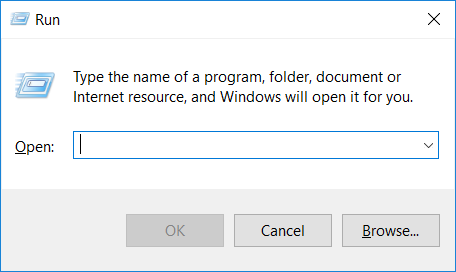
2. In the textbox, type “appwiz.cpl”, then press“ Enter ”.
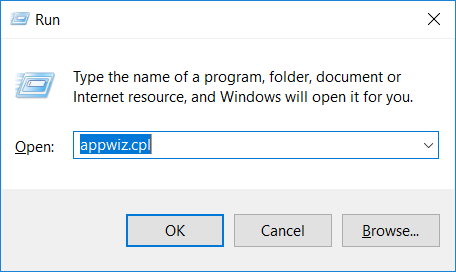
3. The “Programs and features” menu should now appear. It’s a list of all the programs installed on the PC. Here you can find the program, select it, and press “Uninstall“.
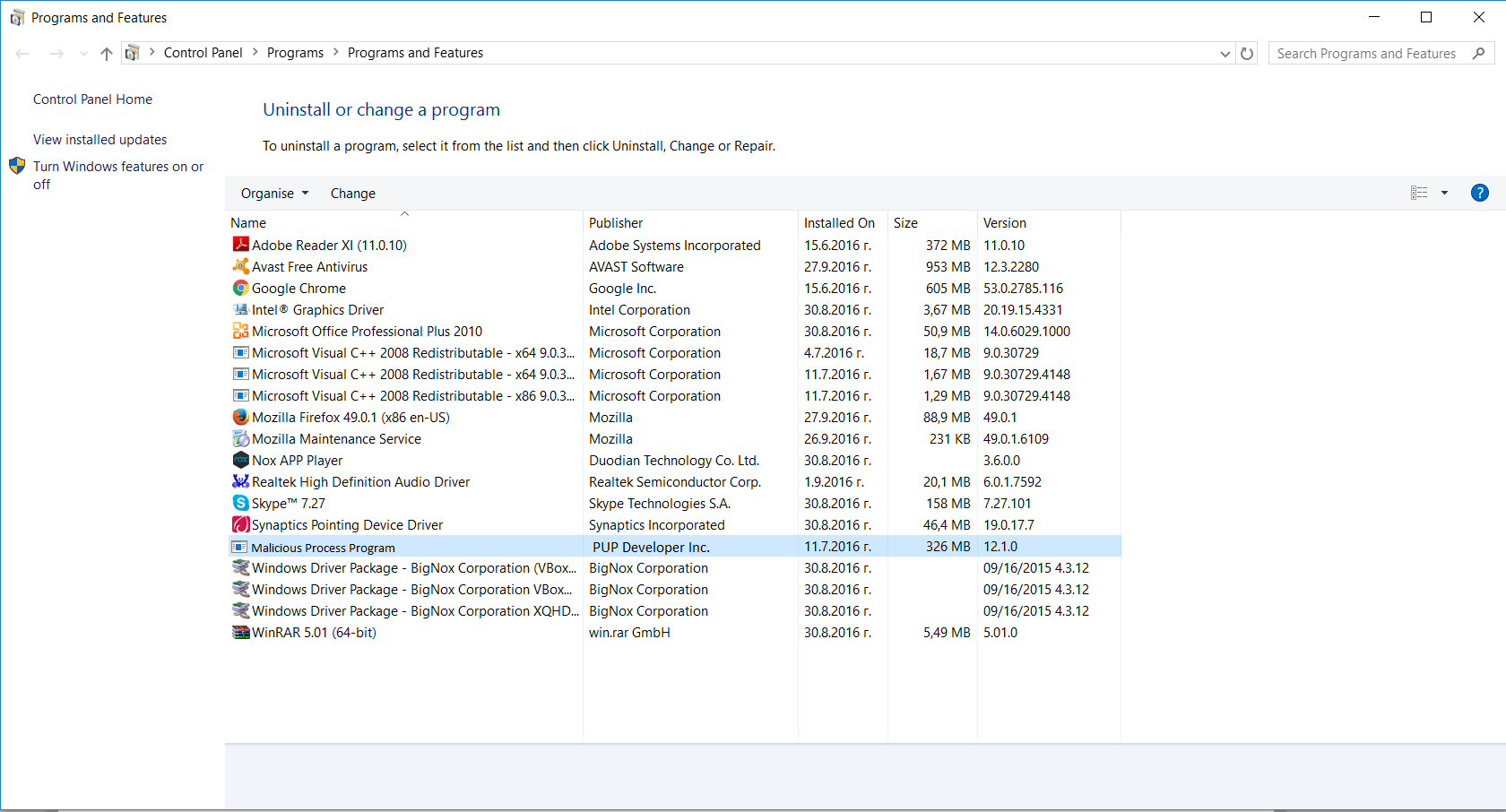
Remove .Ipcrestore Virus From Your Browser
Before resetting your browser’s settings, you should know that this action will wipe out all your recorded usernames, passwords, and other types of data. Make sure to save them in some way.
-
1. Start Mozilla Firefox. In the upper right corner, click on the Open menu icon and select “Add-ons“.
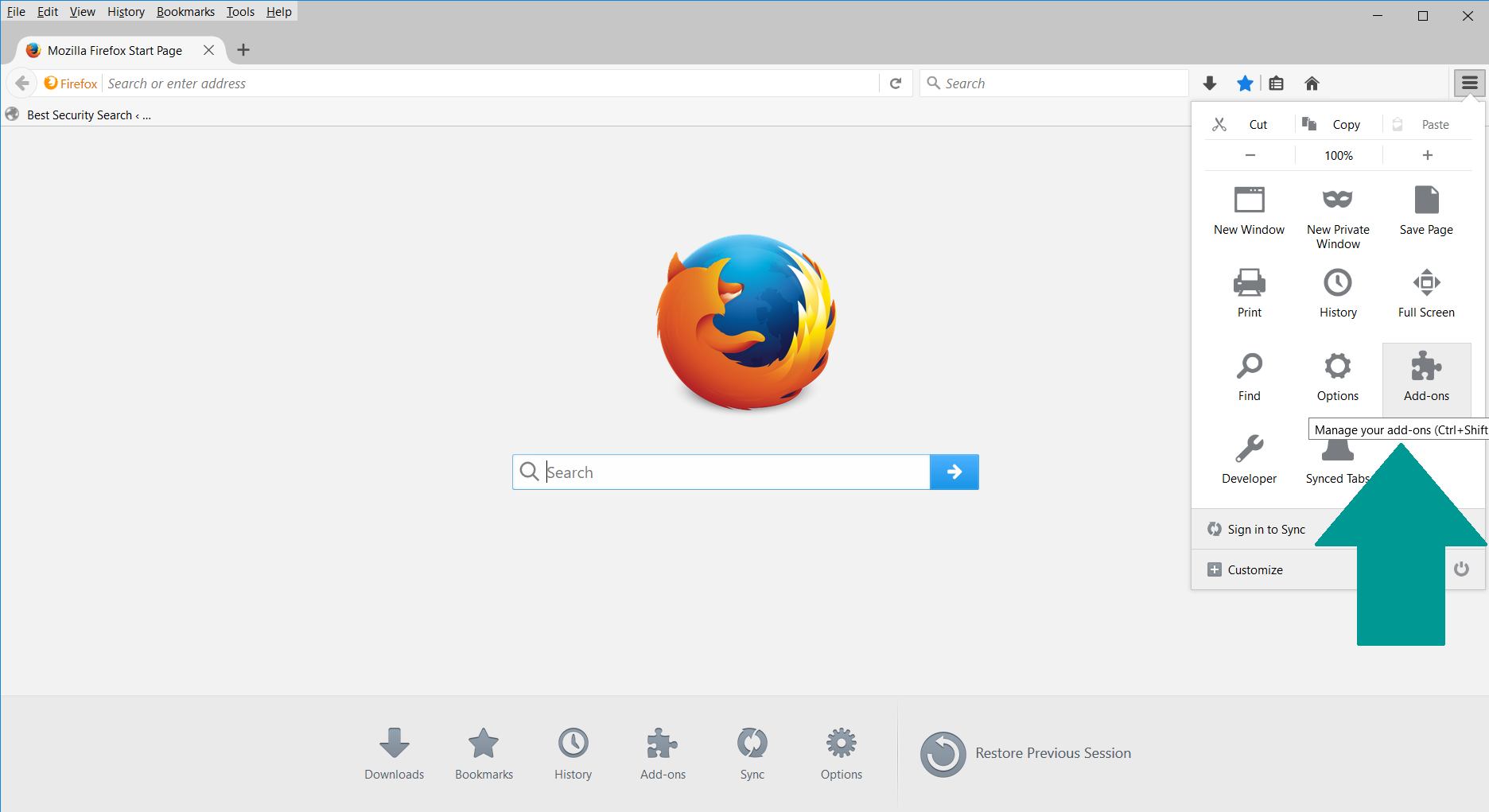
2. Inside the Add-ons Manager select “Extensions“. Search the list of extensions for suspicious entries. If you find any, select them and click “Remove“.
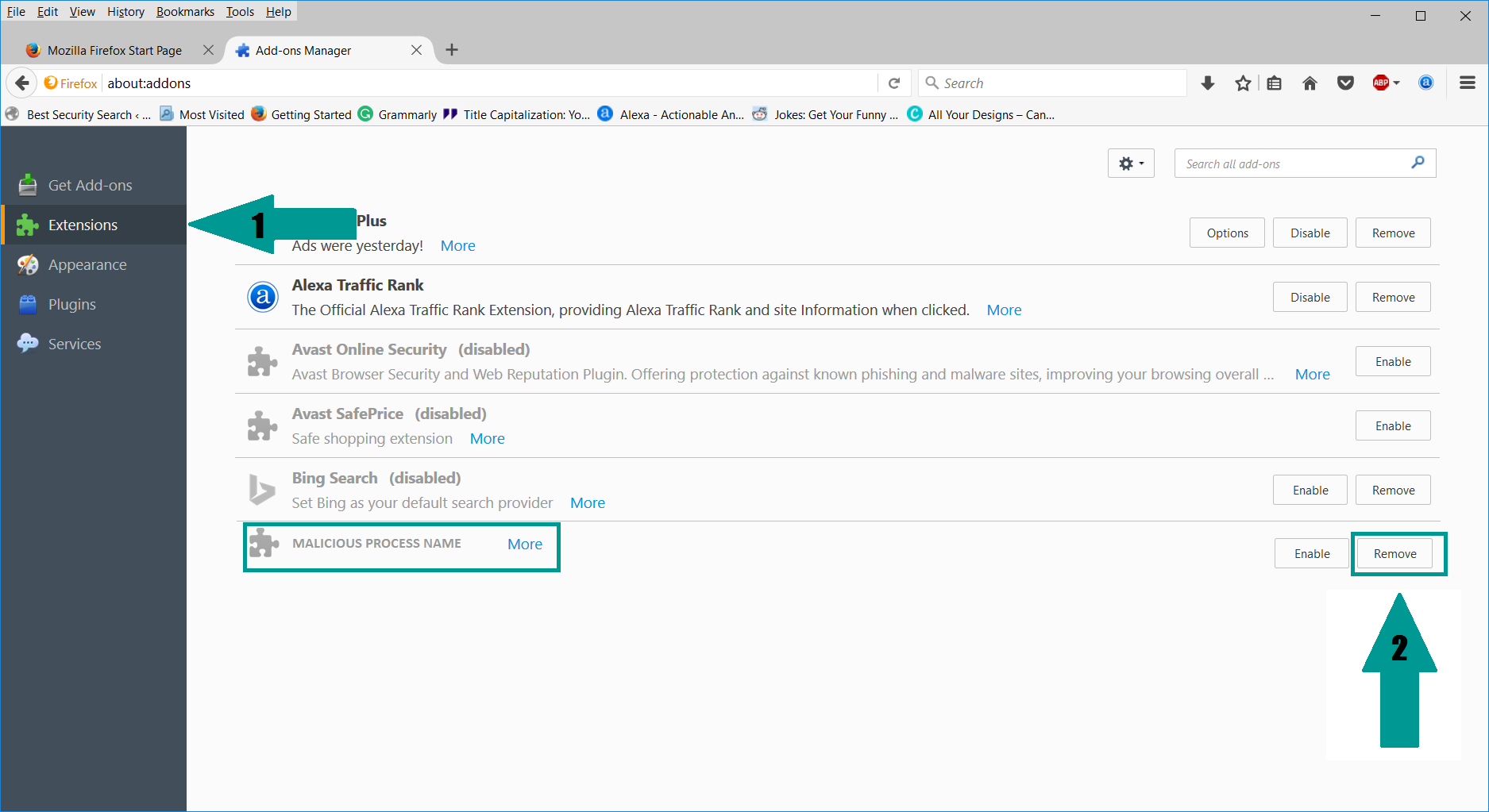
3. Click again on the Open menu icon, then click “Options“.
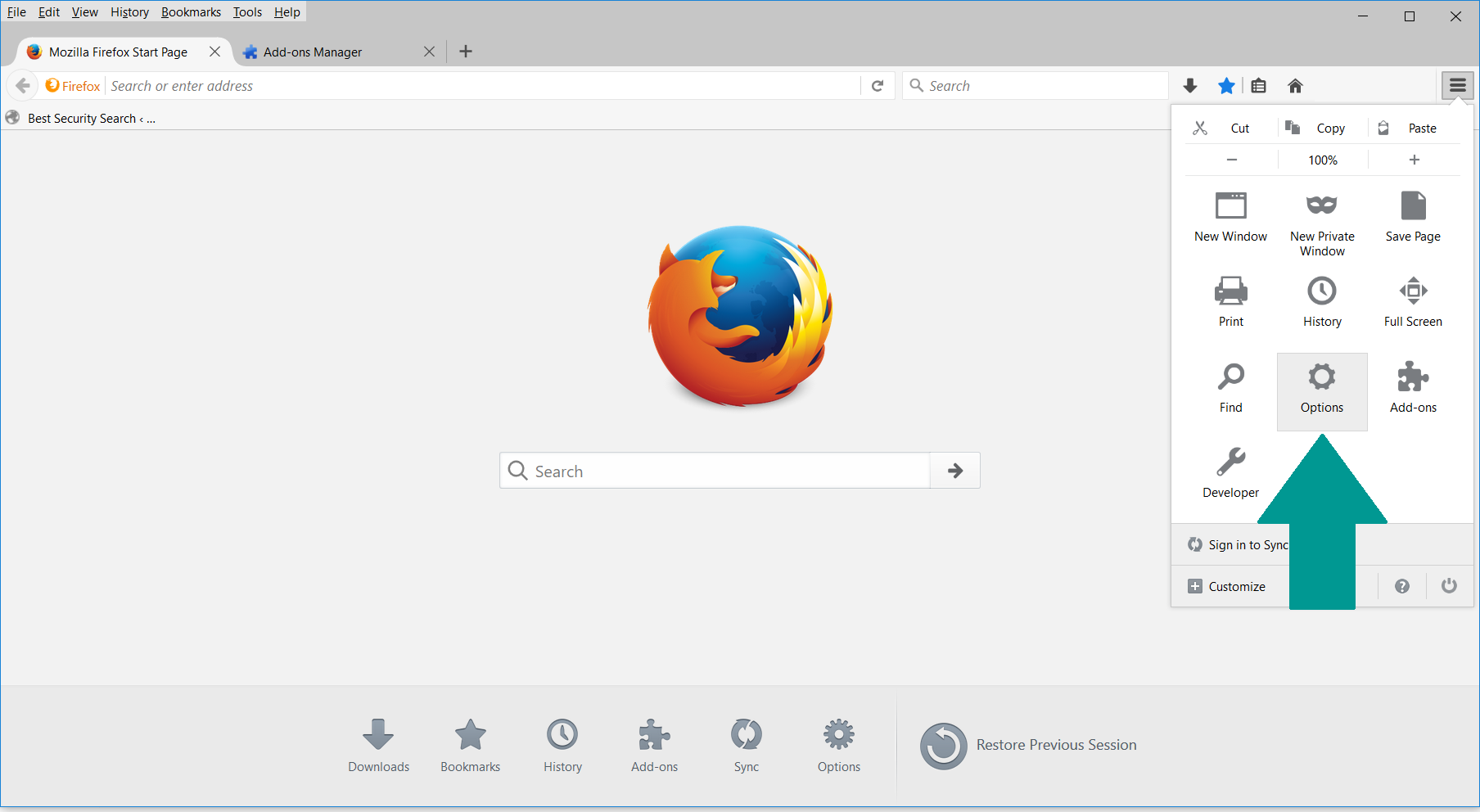
4. In the Options window, under “General” tab, click “Restore to Default“.
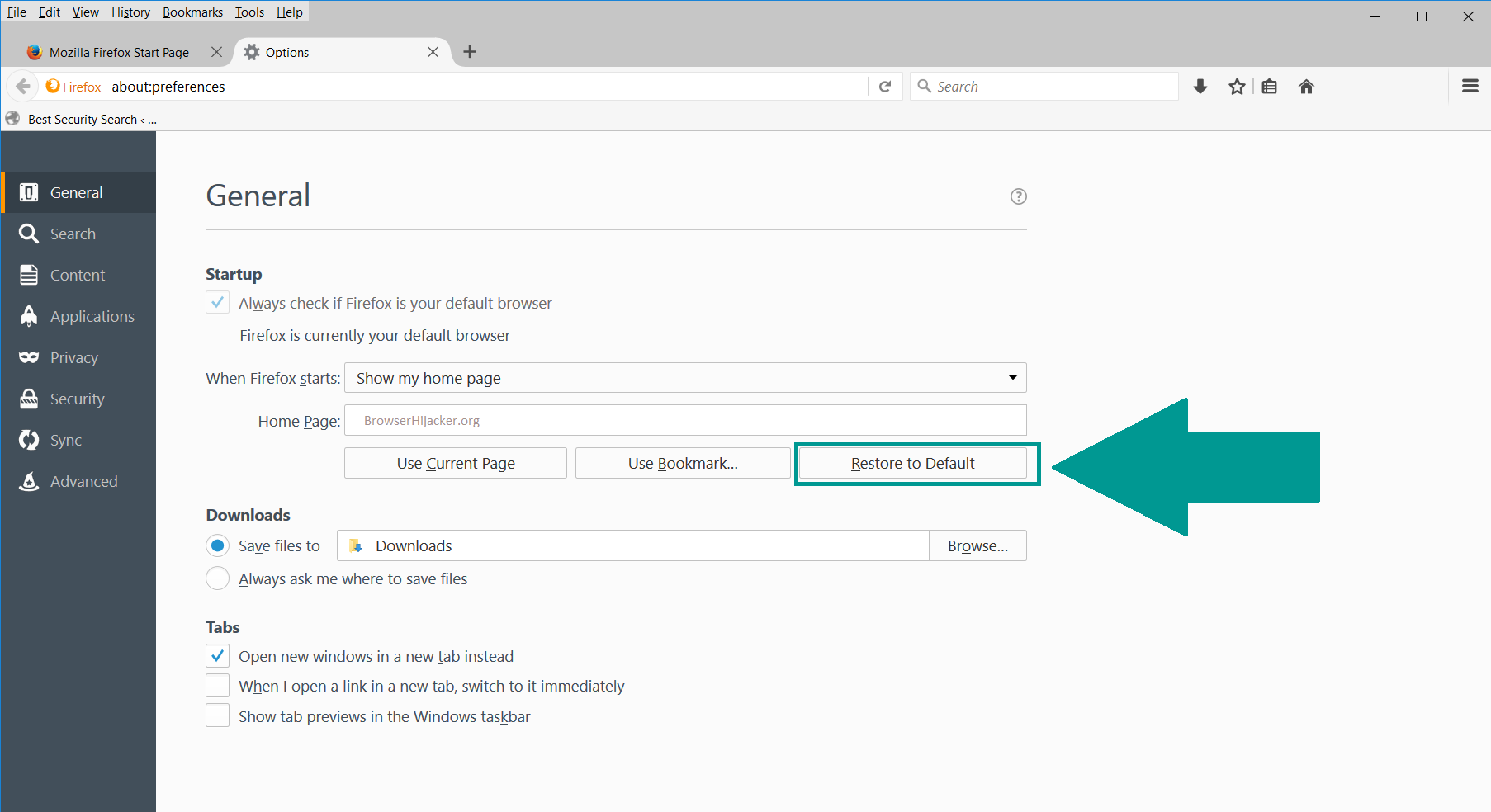
5. Select “Search” in the left menu, mark the unknown search engine and press “Remove”.

-
1. Start Google Chrome. On the upper-right corner, there a “Customize and Control” menu icon. Click on it, then click on “Settings“.
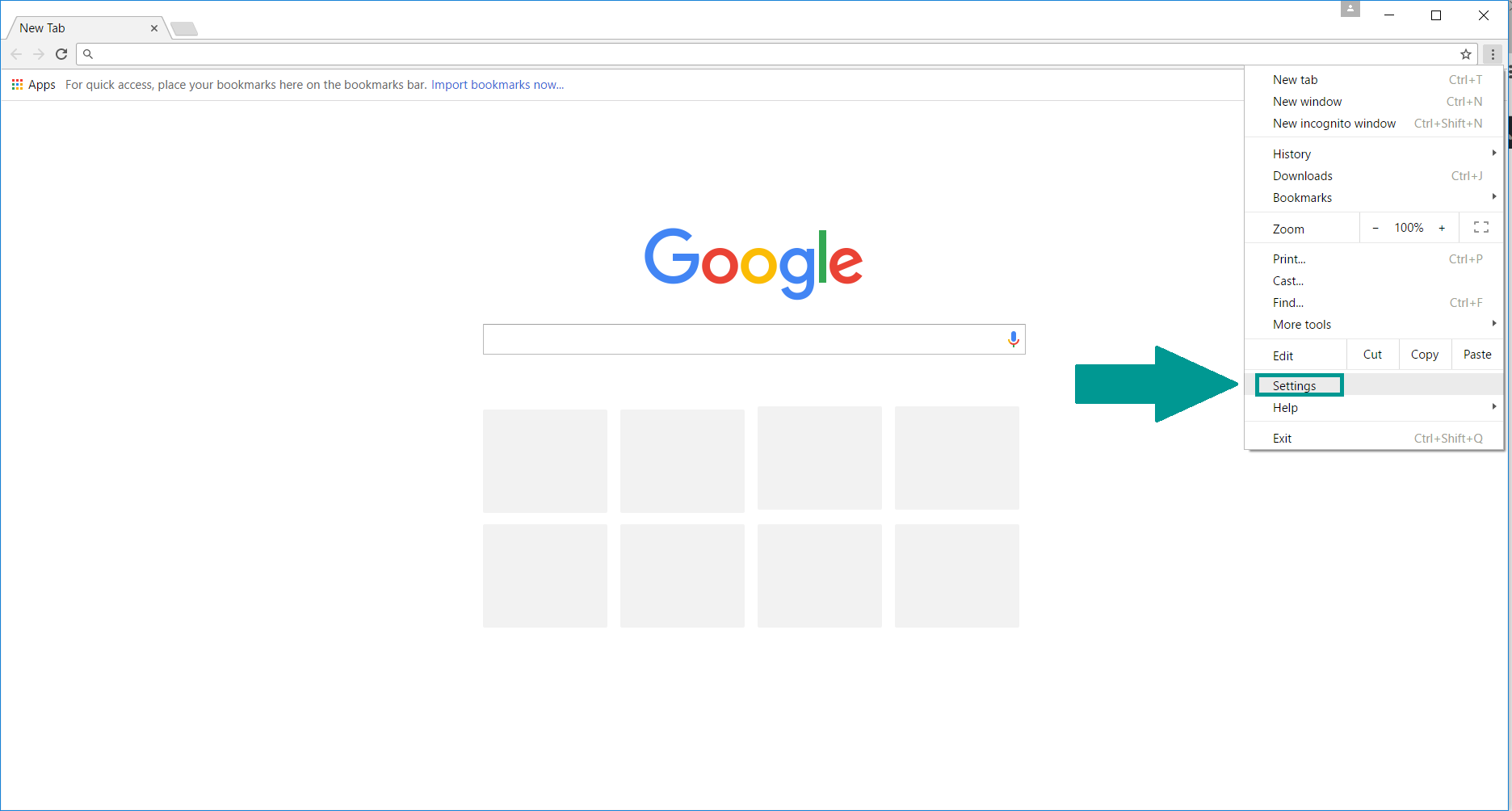
2. Click “Extensions” in the left menu. Then click on the trash bin icon to remove the suspicious extension.
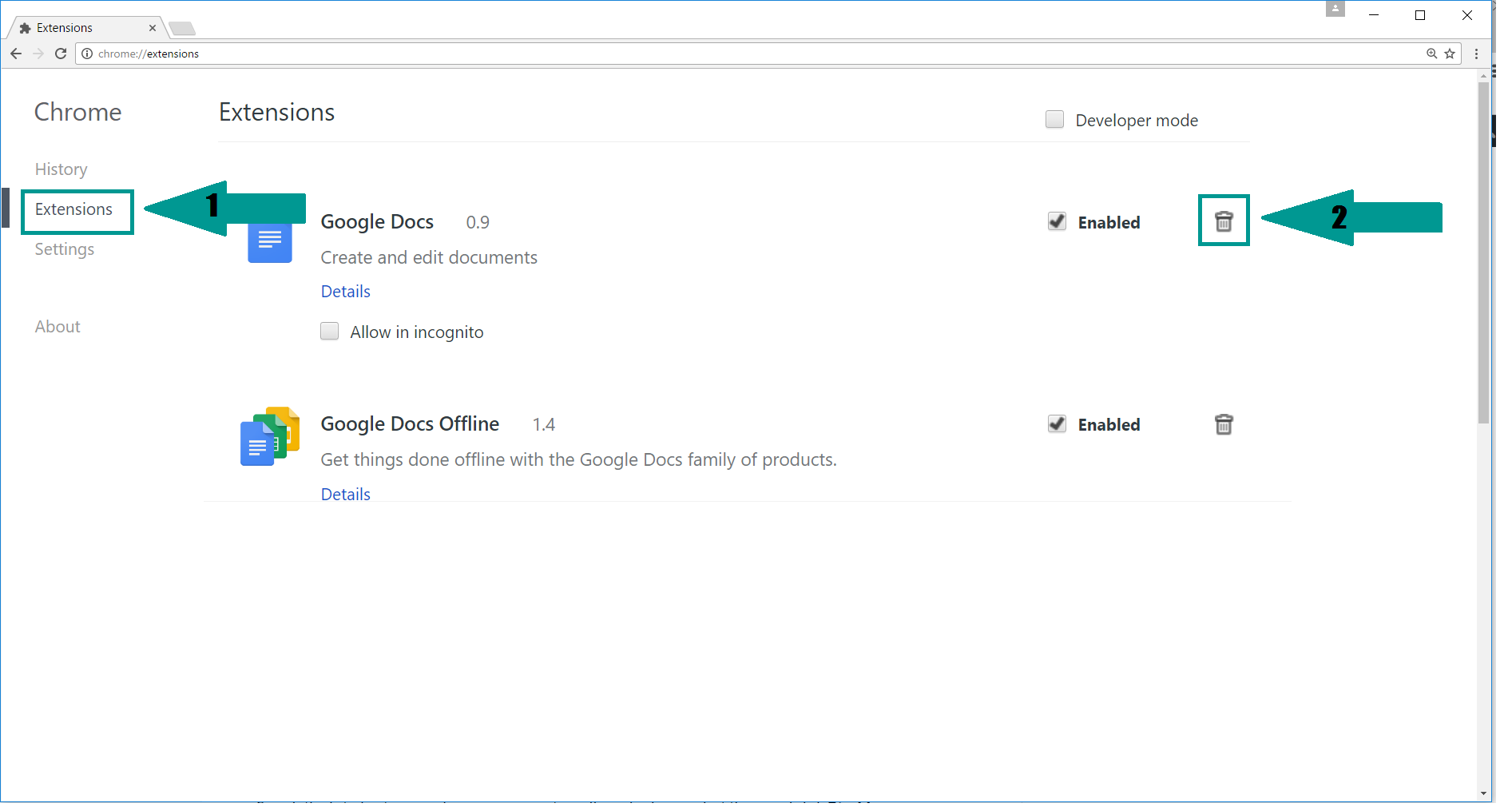
3. Again in the left menu, under Chrome, Click on “Settings“. Go under “On Startup” and set a new page.
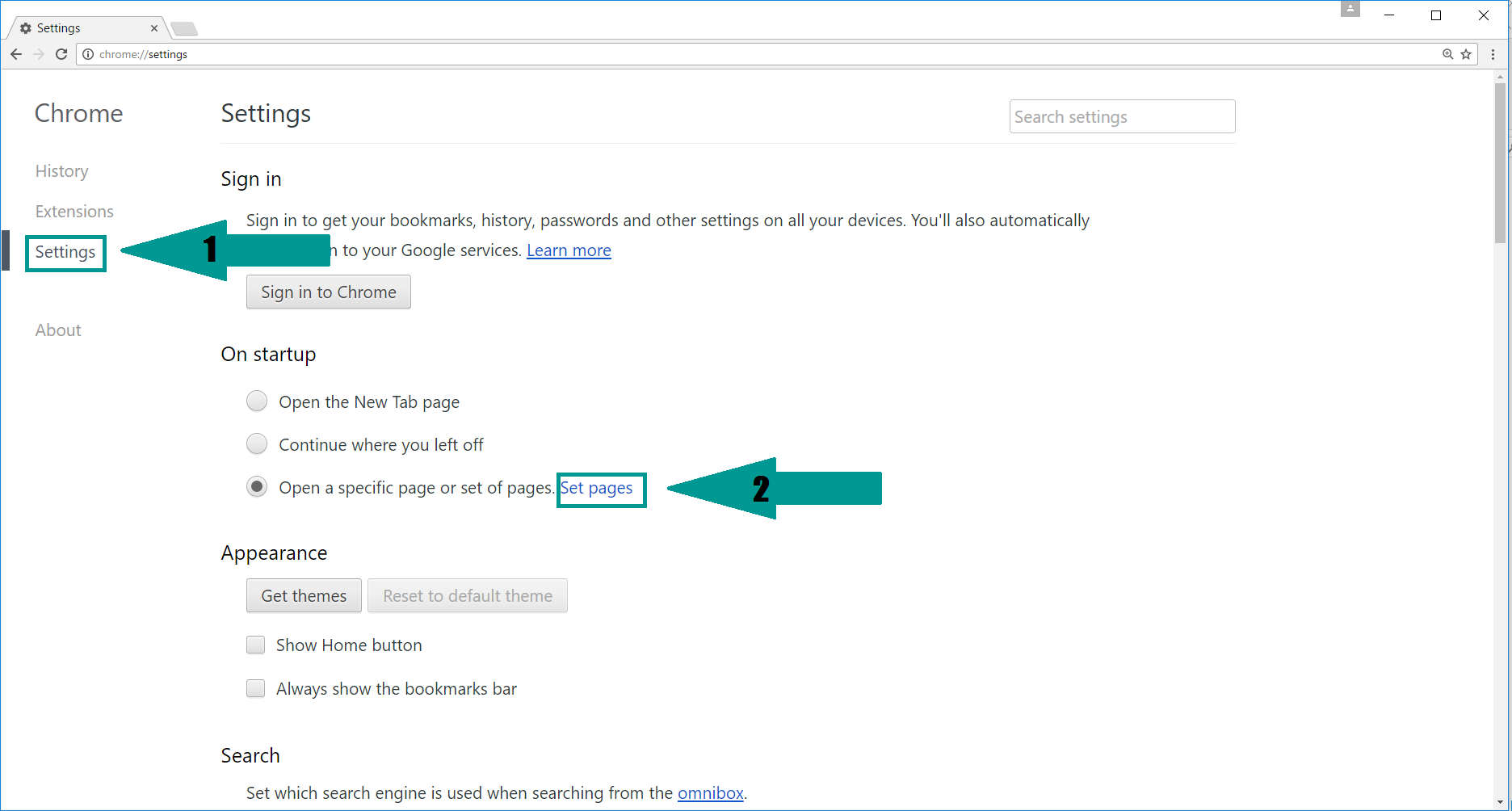
4. Afterward, scroll down to “Search“, click on “Manage search engines“.
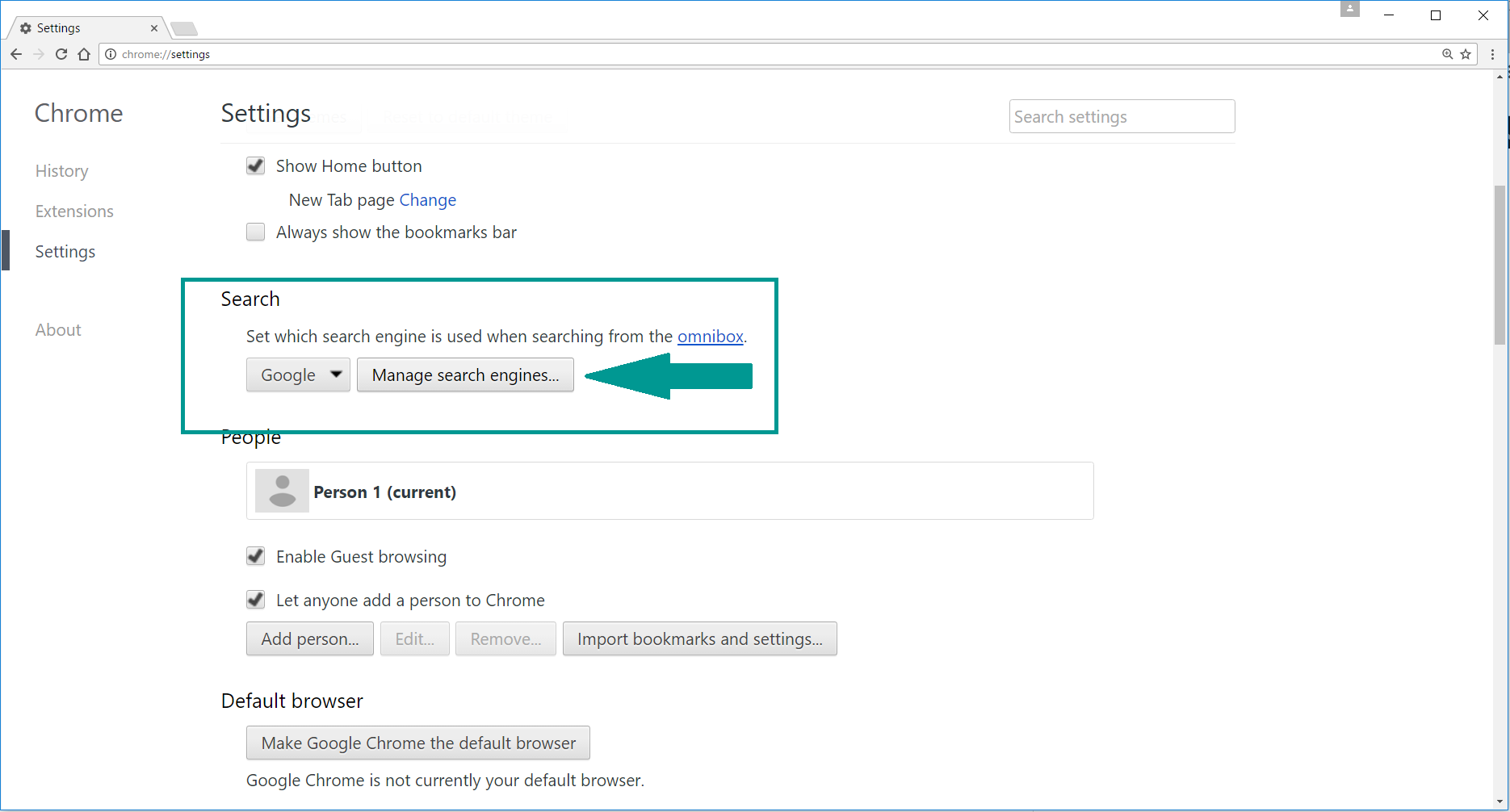
5. In the default search settings list, find the unknown search engine and click on “X“. Then select your search engine of choice and click “Make default“. When you are ready click “Done” button in the right bottom corner.
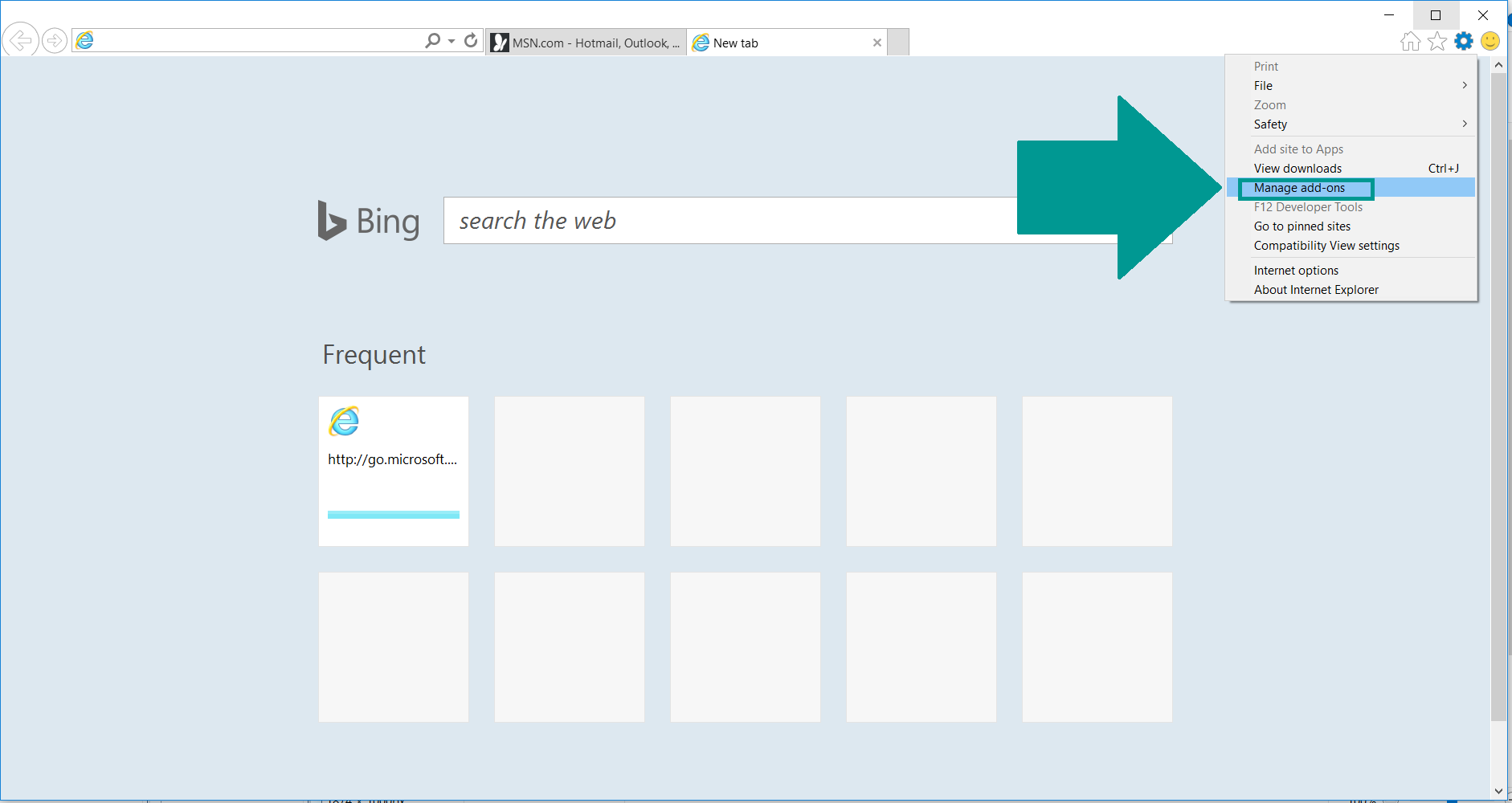
2. In the “Manage add-ons” window, bellow “Add-on Types“, select “Toolbars and Extensions“. If you see a suspicious toolbar, select it and click “Remove“.
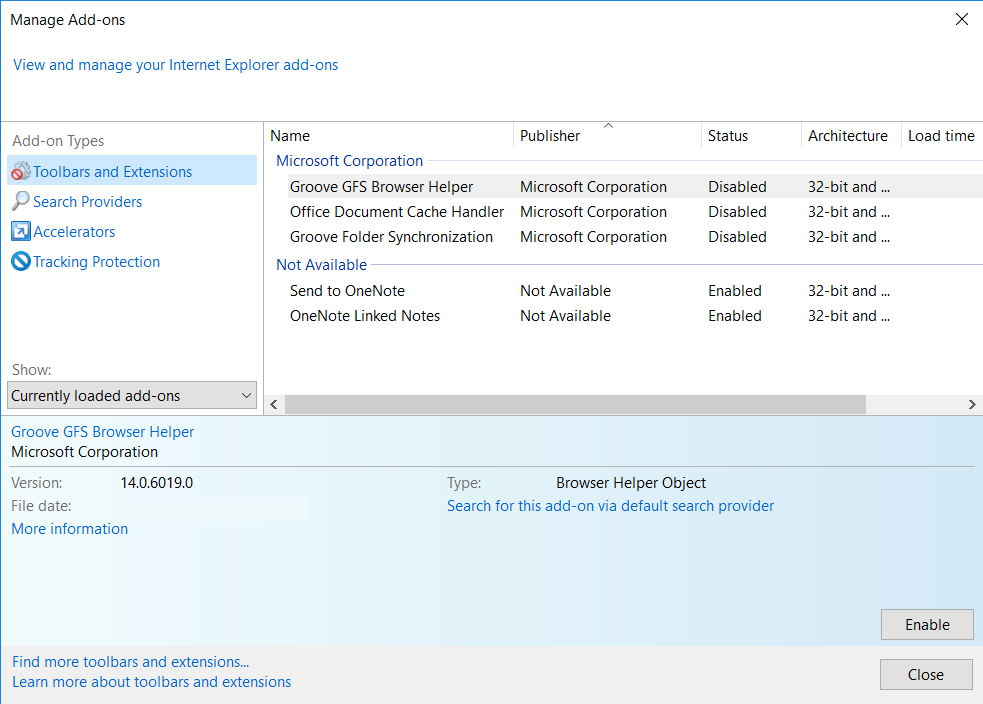
3. Then again in the “Manage Add-ons” window, in “Add-on Types“, Select “Search Providers“. Chose a search engine and click “Set as default“. Select the unknown search engine and click “Remove and Close”.
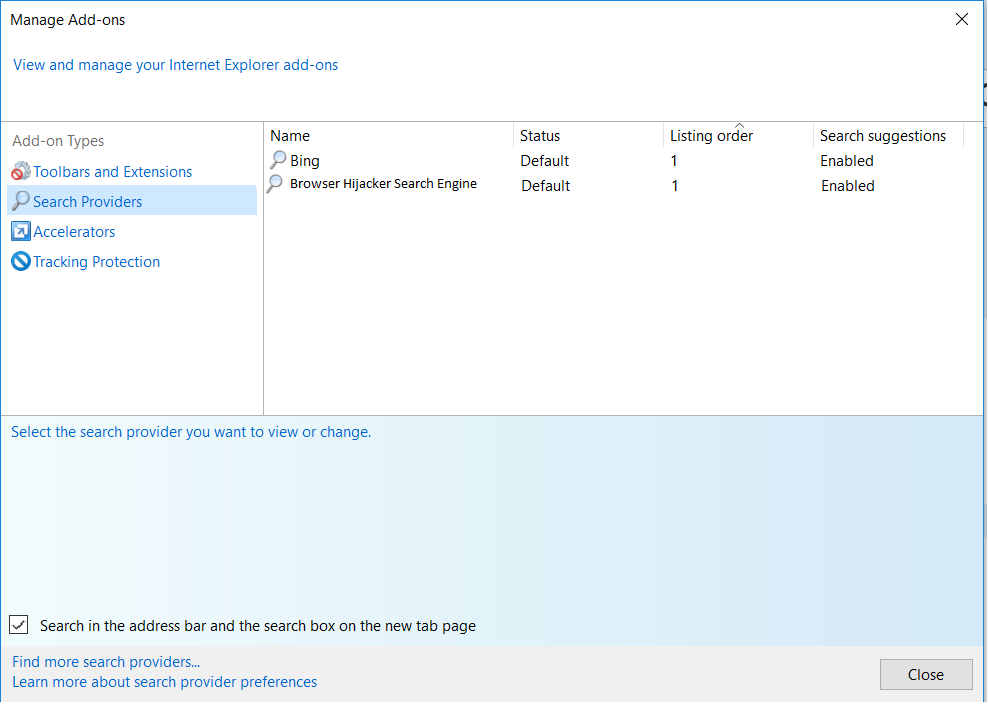
4. Open the Tools menu, select “Internet Options”.
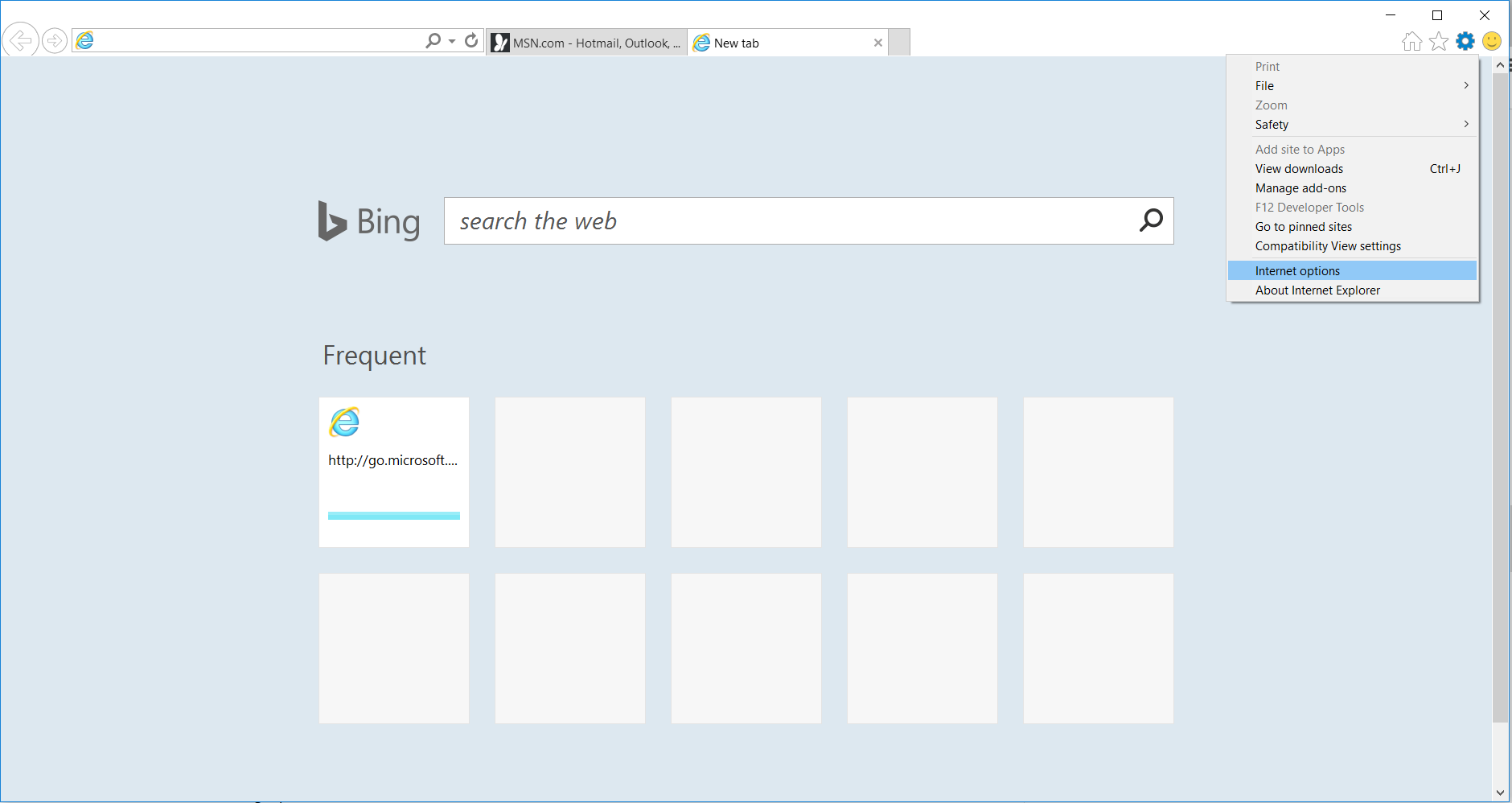
5. In the “General” tab, in “Home page”, enter your preferred page. Click “Apply” and “OK”.
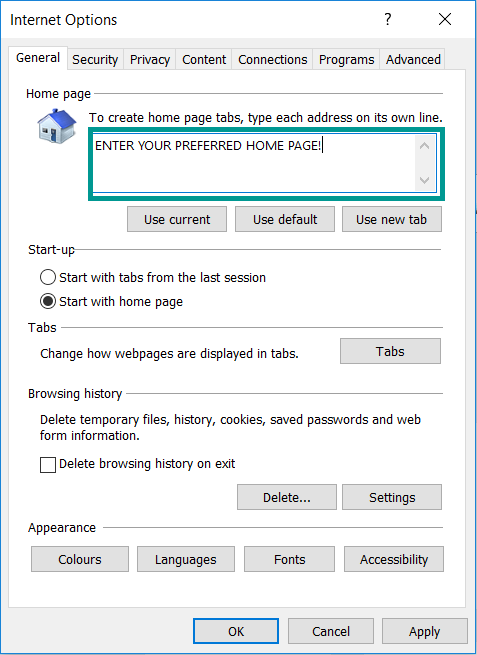
Repair Windows Registry
1. Again type simultaneously the WIN Key + R key combination
2. In the box, write regedit and hit Enter
3. Type the CTRL+ F and then write the malicious name in the search type field to locate the malicious executable
4. In case you have discovered registry keys and values related to the name, you should delete them, but be careful not to delete legitimate keys
Click for more information about Windows Registry and further repair help



